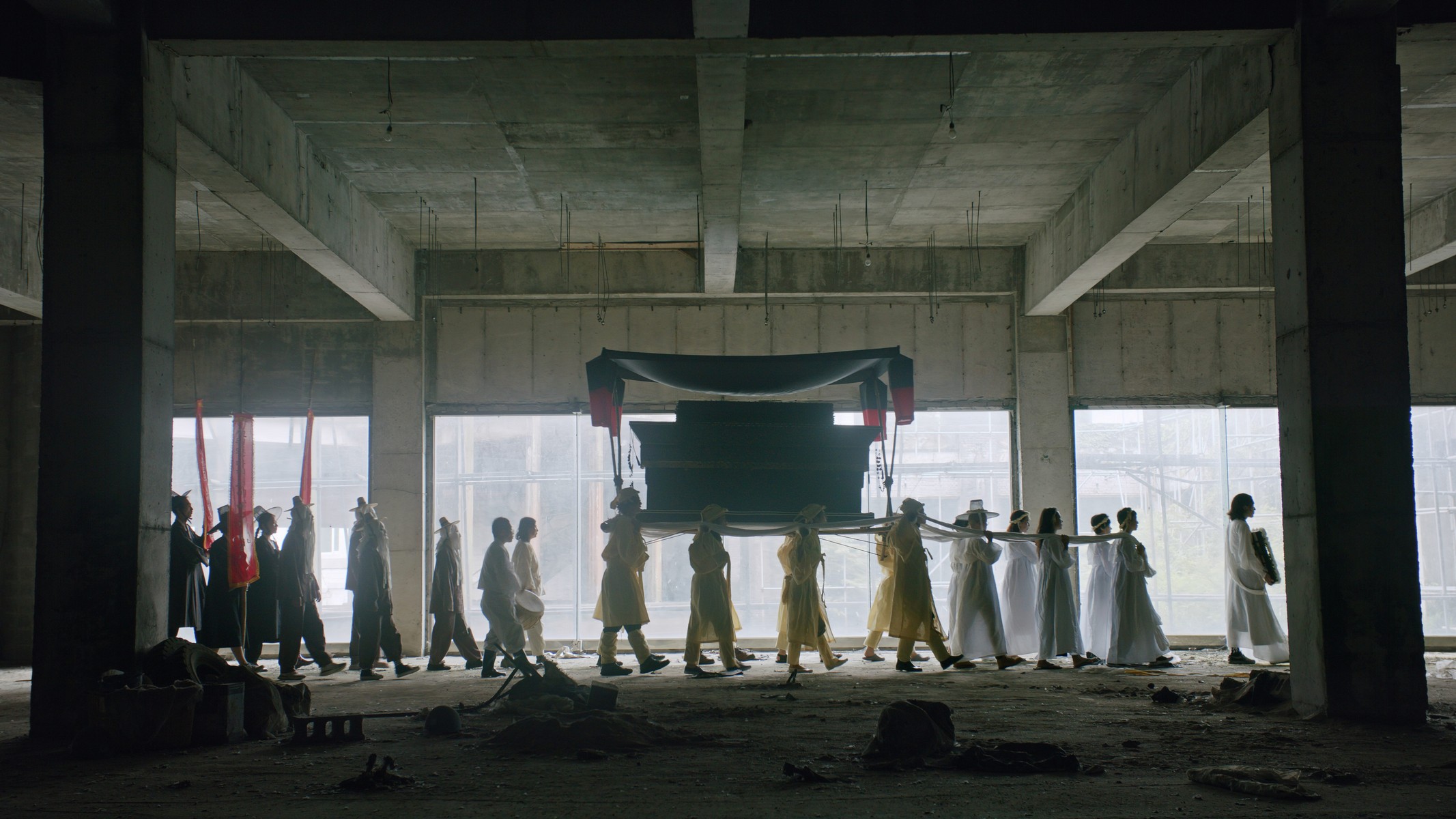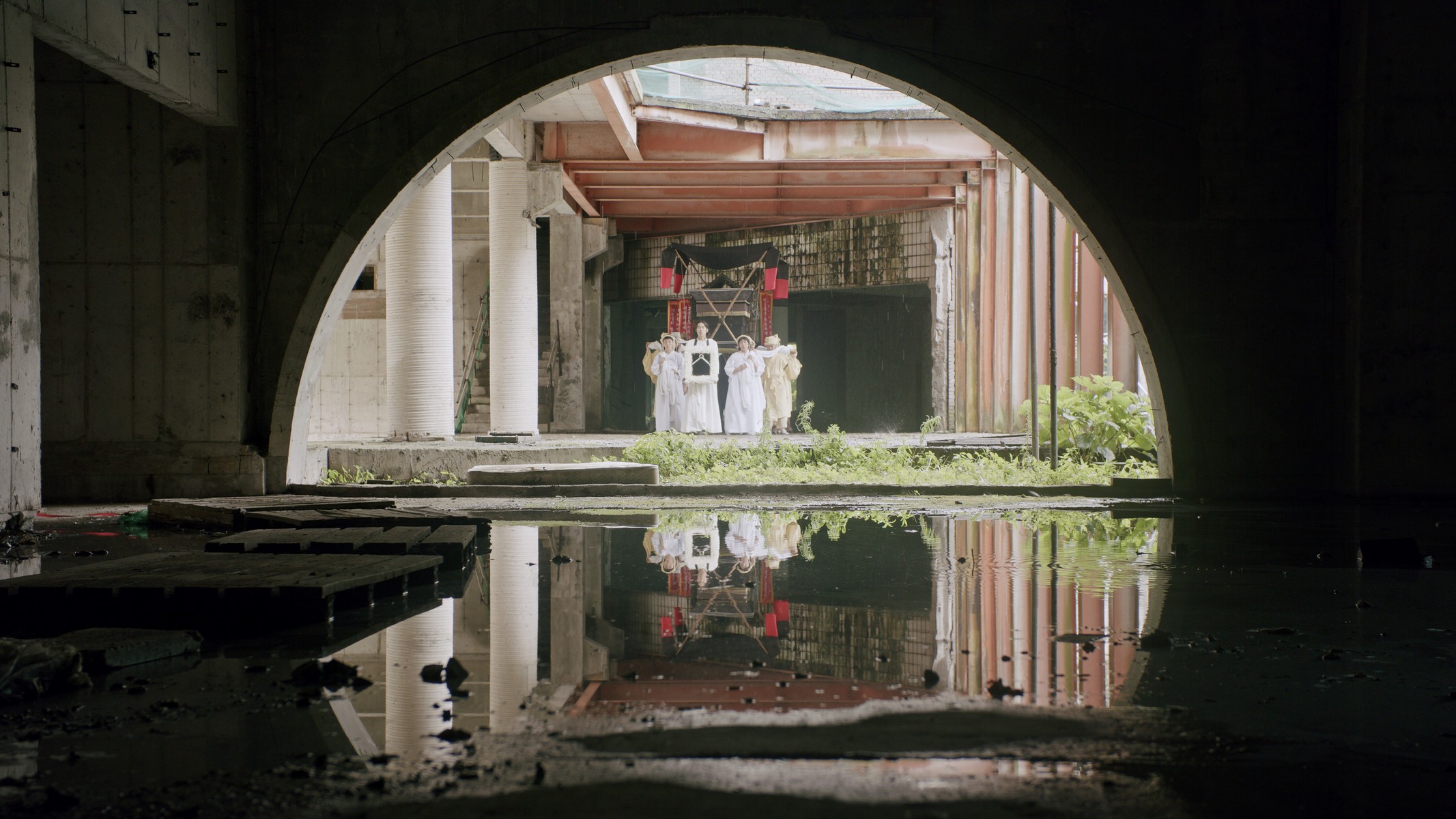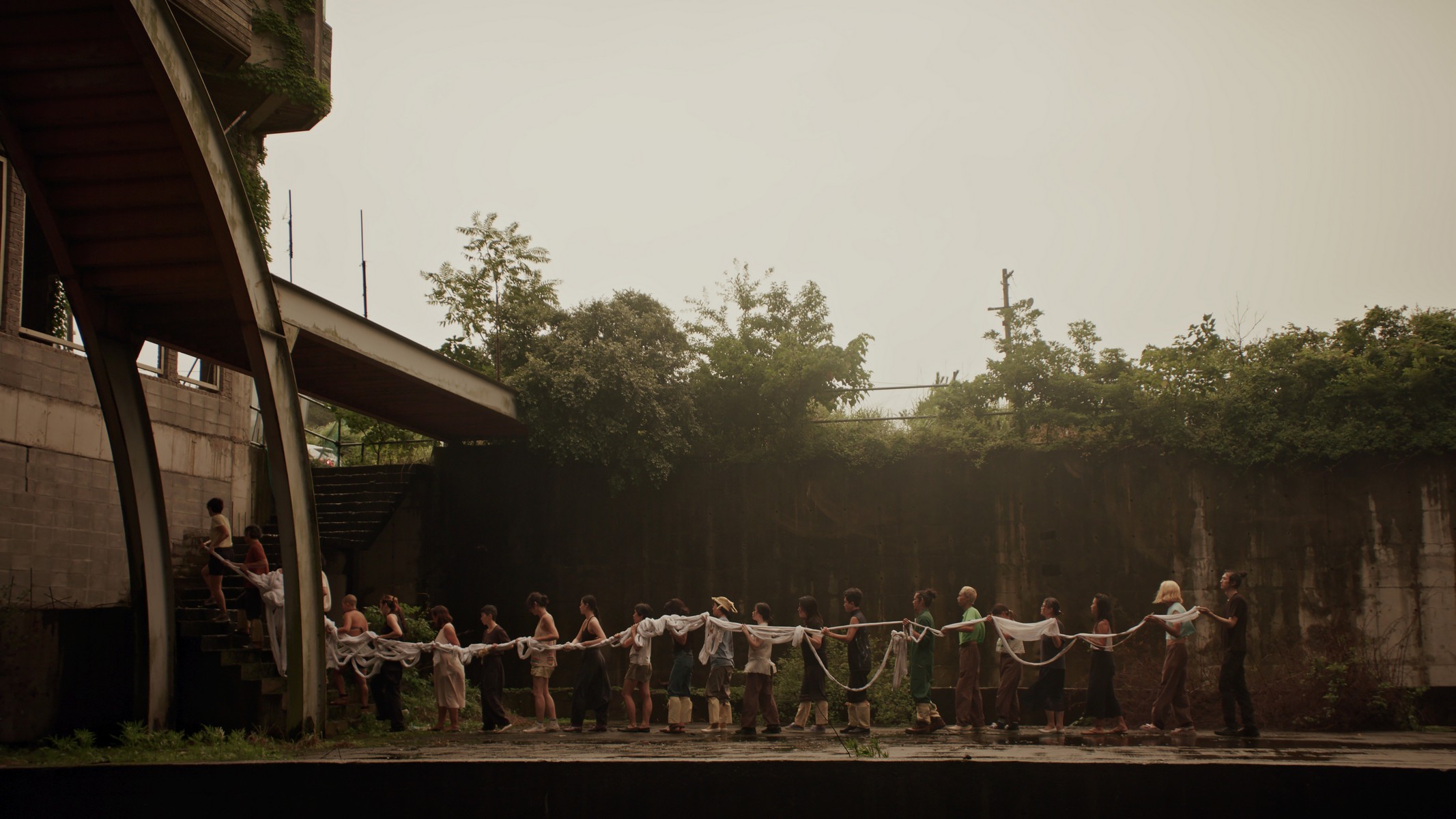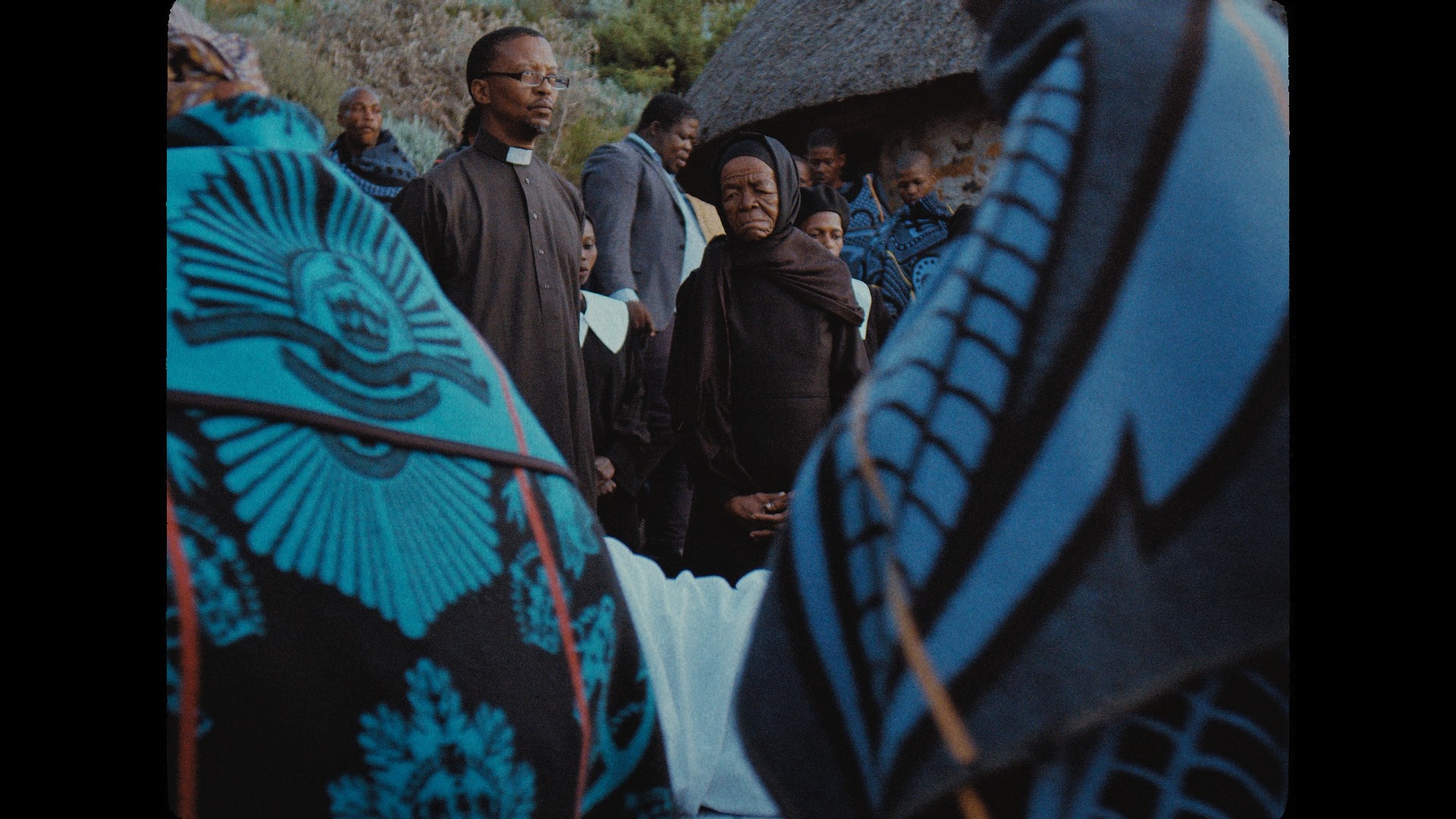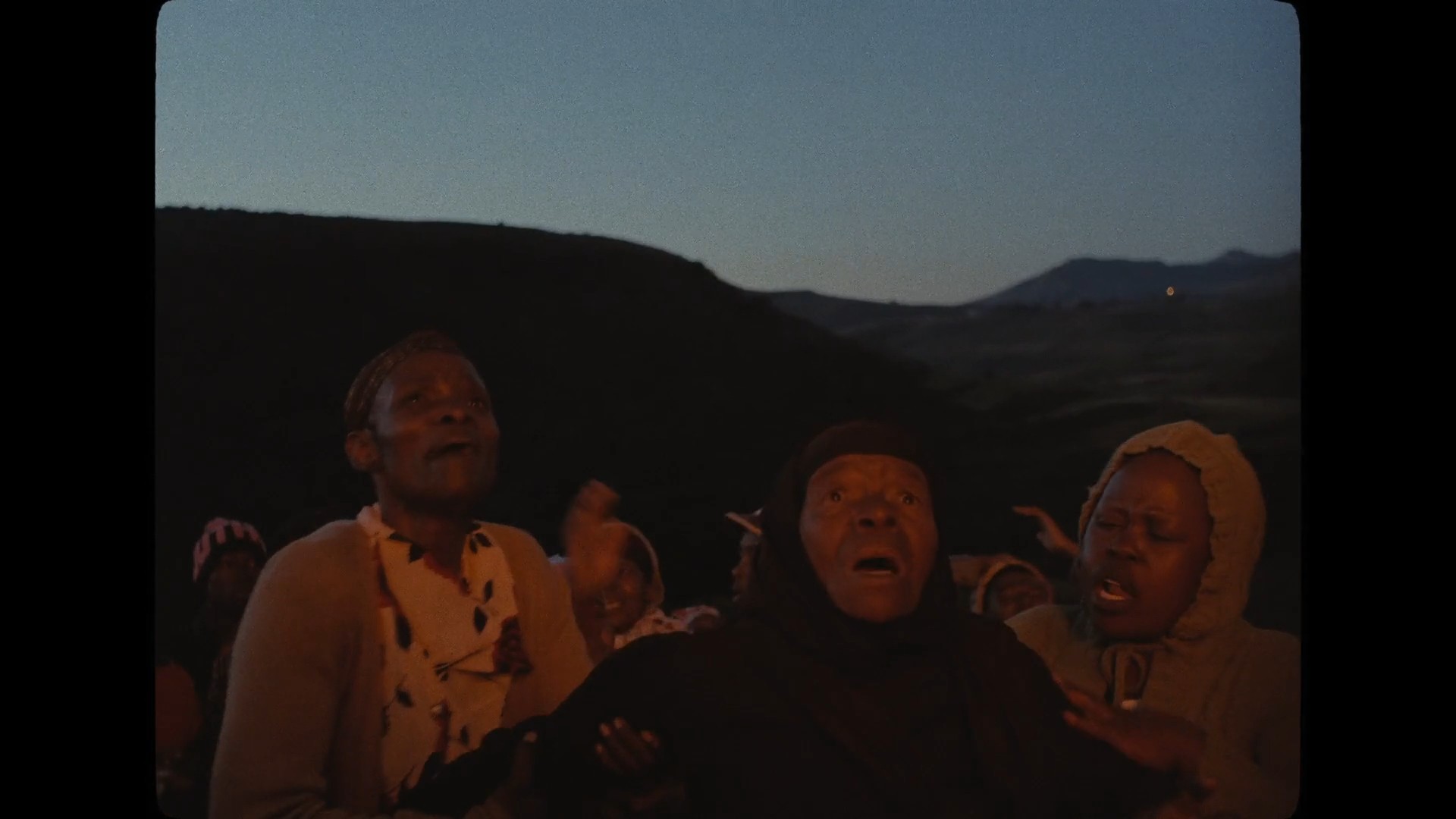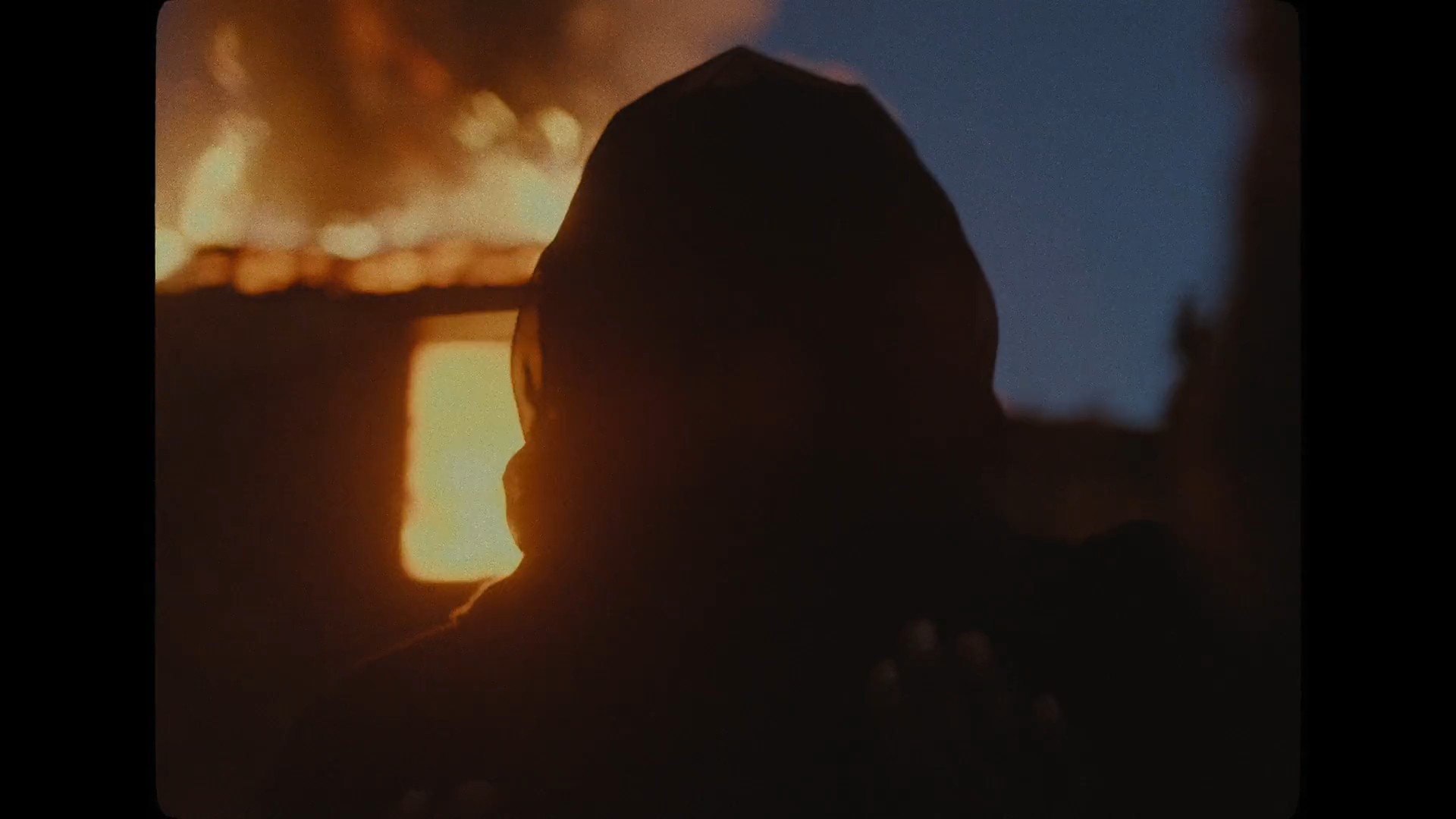PRESENTATION: Ceremony (Burial of an Undead World)
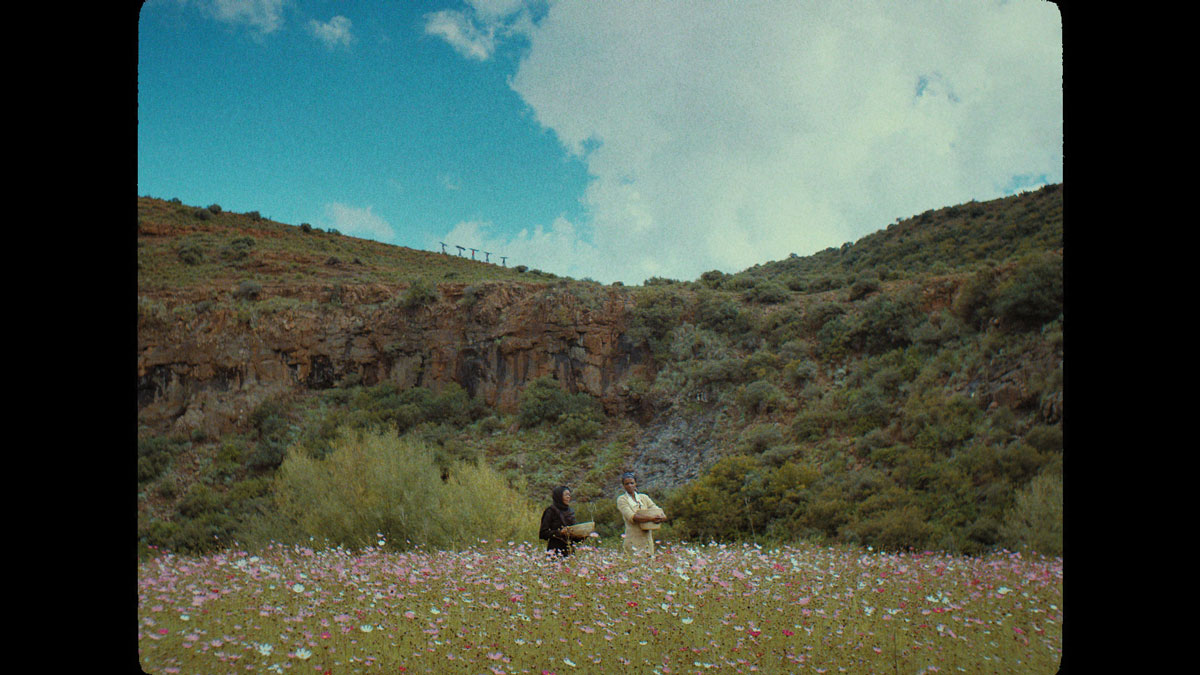 “Ceremony (Burial of an Undead World)” is an exhibition that speaks of continuities among cosmologies and origin myths across space and time, only to upset, against this backdrop, the standard narratives of the modern era and its place in history. The exhibition refers to the writings of Jamaican theorist Sylvia Wynter, to whom the “underside costs” of modernity, from dispossession and slavery to extractivism and climate change, are intimately linked to the “mutations” of Christian cosmology into the secular discourse of modernity.
“Ceremony (Burial of an Undead World)” is an exhibition that speaks of continuities among cosmologies and origin myths across space and time, only to upset, against this backdrop, the standard narratives of the modern era and its place in history. The exhibition refers to the writings of Jamaican theorist Sylvia Wynter, to whom the “underside costs” of modernity, from dispossession and slavery to extractivism and climate change, are intimately linked to the “mutations” of Christian cosmology into the secular discourse of modernity.
By Dimitris Lempesis
Photo: HKW Archive

The exhibition “Ceremony (Burial of an Undead World)” brings together works of various genres and time-periods as well as historical documents with multiple interlocutors. It also includes an extensive program of live events and a publication. The first thing we notice when we come into the exhibition hall is the black fabric all over the room. Various areas in the exhibition space are brightly lit. Others remain dark. The fabrics are shaped to form tents and curtains. Images, installations, and films are displayed on the walls and inside the fabric tents. Sometimes music or a voice can be heard in the space. Sometimes everything remains silent. All this makes us think of a theater. There are several theater stages that we can enter. Ceremonies may be related to religious belief or to a secular event. They may also be held when a politician or the president of a country officially takes on their position. Those kinds of ceremony are about displaying importance and power. All ceremonies have one thing in common: they are based on narratives. They can be personal stories of individuals or be about entire groups. They can be told by religious communities or political parties. People invent stories for very different reasons. Several painted images can be seen on the right, looking from the staircase. The story told in this exhibition begins with them. The pictures show a group of animals at a table. The animals are sitting peacefully in a circle, although they could be hunting each other. The lion sits in the middle. Everything in this gathering of animals revolves around the lion. Only one figure is standing: a monkey reading from a book. These images come from Ethiopia, a country in the east of Africa that used to be called Abyssinia. They are about a ceremony: the last emperor of Abyssinia is being crowned. He is depicted here as a lion. The emperor was called Haile Selassie. He lived from 1892 to 1975 and was known by the title “Lion of Judah.” Judah is a kingdom in the Bible. The Bible is the holy book of all Christians. Rays of light and a dove can be seen above the lion in the pictures. That reference also comes from the Bible. There, the dove stands for the connection between heaven and Earth, humans and God. This suggests that the lion in the image receives its power directly from God. The monkey leads the peaceful ceremony. Like a priest, he reads from the Bible. In other stories from Ethiopia, however, the role of the monkey is less clear. He can also be a cunning trickster or a captivating storyteller.
We turn to the panels of images by Aby Warburg that are shown next to the stairs. They include photographs of Mussolini. In one of the photos he is driving through Rome in a convertible car with his pet lioness in his arms. This lioness was even called Italia. Another picture shows him visit-ing his adult pet at the zoo. The lion has been a symbol of dominance for thousands of years. The idea was that the animal’s power would be transmitted to Mussolini. These images, which appeared in newspapers around the world, are meant to show him as Italy’s powerful and fearless leader. This reveals how Mussolini used images as an effective way to portray his power. Art historian Aby Warburg believed that he could tell the story of cultures with images and without any words. Because pictures speak to us more directly than words. The stories they tell are seductive and make us believe that what we see is true – whether in a church mural or a newspaper photograph. In his “Mnemosyne Picture Atlas”, Warburg brought together around a thousand pictures on black panels. Like Warburg, the exhibition organizers also explore images. They aim to show how works of art are used to change how people picture the world in their minds. That process, however, often benefits the handful of powerful people who rule the world. They mostly come from the worlds of politics and business and are influential in Europe and the USA. However, their images only show one point of view. The views of other people are thus made invisible. There is also no narrator’s voice commenting on the historical film im-ages in “Diana’s Looking Glass” (1996) by Angela Lucchi and Yervant Gianikian. The film consists of shots of Lake Nemi in Italy. Mussolini had this lake drained in around 1930. The goal was to salvage two ships built 2000 years ago by the Roman Emperor Caligula. On one of the ships there was a shrine to Diana, the Roman goddess of hunting, the Moon, women, and childbirth. In Caligula’s day, the most important temple to Diana was located at Lake Nemi. The Roman ships sank with-out a trace. Mussolini had these pieces of Roman heritage raised again. That created a link between the Roman emperors’ boundless power and himself. The film images of the ships being found are followed by shots of the Italian army making violent conquests in Africa. Just as the rulers in ancient Rome kept expanding the area where they ruled, Mussolini wanted to build an empire. Combined with the somber film music and footage of war scenes and dead animals, a picture of doom and death emerges.
The film “Magia Lucana” (1958) by Luigi Di Gianni, shown to the left of the staircase, is about a region in southern Italy. A narrator’s voice accompanies the black-and-white shots of peasant life in the Basilicata region. For centuries, faith has helped the farmers find strength for their work in the parched landscape. Christians believe that God will reward them after their death for their suffering. The film shows us Christian and non-Christian customs with no clear dividing line between them. That includes images of saints as well as a belief in the supernatural or in spirits. Those two kinds of storytelling coexist here and are seen as equally valuable. The people in the film do not need to make a distinction between past and present, religion and magic. Darkness, chaos, and grief are part of life. Even the sun, which makes life possible, can also destroy life with its heat. The dead and ghosts have a permanent place in these people’s lives. This attitude does not fit in with ideas about modern life: for example, belief in progress and moving towards a better future. The actors in the film by Lemohang Jeremiah Mosese are promised that kind of better future, in which people even control the forces of nature. “This Is Not a Burial, It’s a Resurrection” (2020) is set in a village in Lesotho, a country in southern Africa. A narrator-musician also guides us through this film. He plays the music of his ancestors on an instrument called the lesiba. In the story, a fertile valley provides food for the farmers and their animals. However, the village is going to be replaced by a reservoir. The people who live there and the graves of their dead are to be relocated. They are forced to change their lives dramatically in the name of progress. Only one old woman, the widow Mantoa, resists. She has no desire to leave her home, her family’s graves, and the place where she wants to die. In the film, she opposes destructive progress with her grief. The village community, on the other hand, sets out for an uncertain future, leaving behind their old life with its stories. The films by Di Gianni and Mosese are full of striking contrasts, accom-panied by atmospheric sounds and the chants of mourning women. The women maintain connections between the living and the dead. Just as the goddess Diana protects life that is coming into being, the widow Mantoa tries to protect the dead. In both films, death takes a central place in the life of the community. These communities are threatened. The work “Burial of this Order” (2022) by Jane Jin Kaisen is also about a funeral ceremony. In the video we see a group of people dressed in white carrying a coffin. This kind of solemn procession usually walks through a cemetery. Here the procession moves through an abandoned building site – a modern ruin? The ceremony ends in an image of destruction. Objects from the video are on display in the exhibition space.
Works by: Leo Asemota, Shuvinai Ashoona, Richard Bell, Raymond Boisjoly, Gaëlle Choisne, Pauline Curnier Jardin, Alice Creischer & Andreas Siekmann, Mario Cresci, Abraham Cruzvillegas, Mariana Castillo Deball, Stan Douglas, Albrecht Dürer, Léon Ferrari, Jermay Michael Gabriel, Luigi Di Gianni, Yervant Gianikian & Angela Ricci Lucchi, Leah Gordon, Nicolás Guillén, Ho Rui An, James T. Hong, Dapper Bruce Lafitte, Carlo Levi, Jane Jin Kaisen. William Kentridge, Will Kwan, Mary Reid Kelley & Patrick Kelley, Titina Maselli, Cecilia Mangini, Guadalupe Maravilla, Peter Minshall, Lemohang Jeremiah Mosese, Ernest Nash, Le Nemesiache, Rachel O’Reilly, István Orosz, Huang Yong Ping, Rosa von Praunheim, Tabita Rezaire, Elza Soares, Karlheinz Stockhausen, Jean-Marie Straub & Danièle Huillet, Kidlat Tahimik, Rosemarie Trockel, Joyce Wieland, Tania Willard, David Wojnarowicz, Xiyadie, Lawrence Paul Yuxweluptun
Photo: Lemohang Jeremiah Mosese, This Is Not a Burial, It’s a Resurrection, 2020, film still, Courtesy the artist and Memento Film International
Info: Curators: Anselm Franke, Elisa Giuliano, Denise Ryner, Claire Tancons, Zairong Xiang, Haus der Kulturen der Welt (HKW), John-Foster-Dulles-Allee 10, Berlin, Germany, Duration: 23/10-30/12/2022, Days & Hours: Mon & Wed-Sun 12:00-20:00, www.hkw.de/

